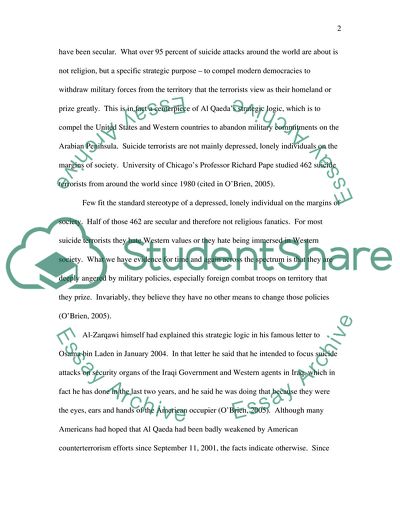Cite this document
(“Al-Qaeda Network Term Paper Example | Topics and Well Written Essays - 2500 words”, n.d.)
Al-Qaeda Network Term Paper Example | Topics and Well Written Essays - 2500 words. Retrieved from https://studentshare.org/social-science/1544310-al-qaida
Al-Qaeda Network Term Paper Example | Topics and Well Written Essays - 2500 words. Retrieved from https://studentshare.org/social-science/1544310-al-qaida
(Al-Qaeda Network Term Paper Example | Topics and Well Written Essays - 2500 Words)
Al-Qaeda Network Term Paper Example | Topics and Well Written Essays - 2500 Words. https://studentshare.org/social-science/1544310-al-qaida.
Al-Qaeda Network Term Paper Example | Topics and Well Written Essays - 2500 Words. https://studentshare.org/social-science/1544310-al-qaida.
“Al-Qaeda Network Term Paper Example | Topics and Well Written Essays - 2500 Words”, n.d. https://studentshare.org/social-science/1544310-al-qaida.


